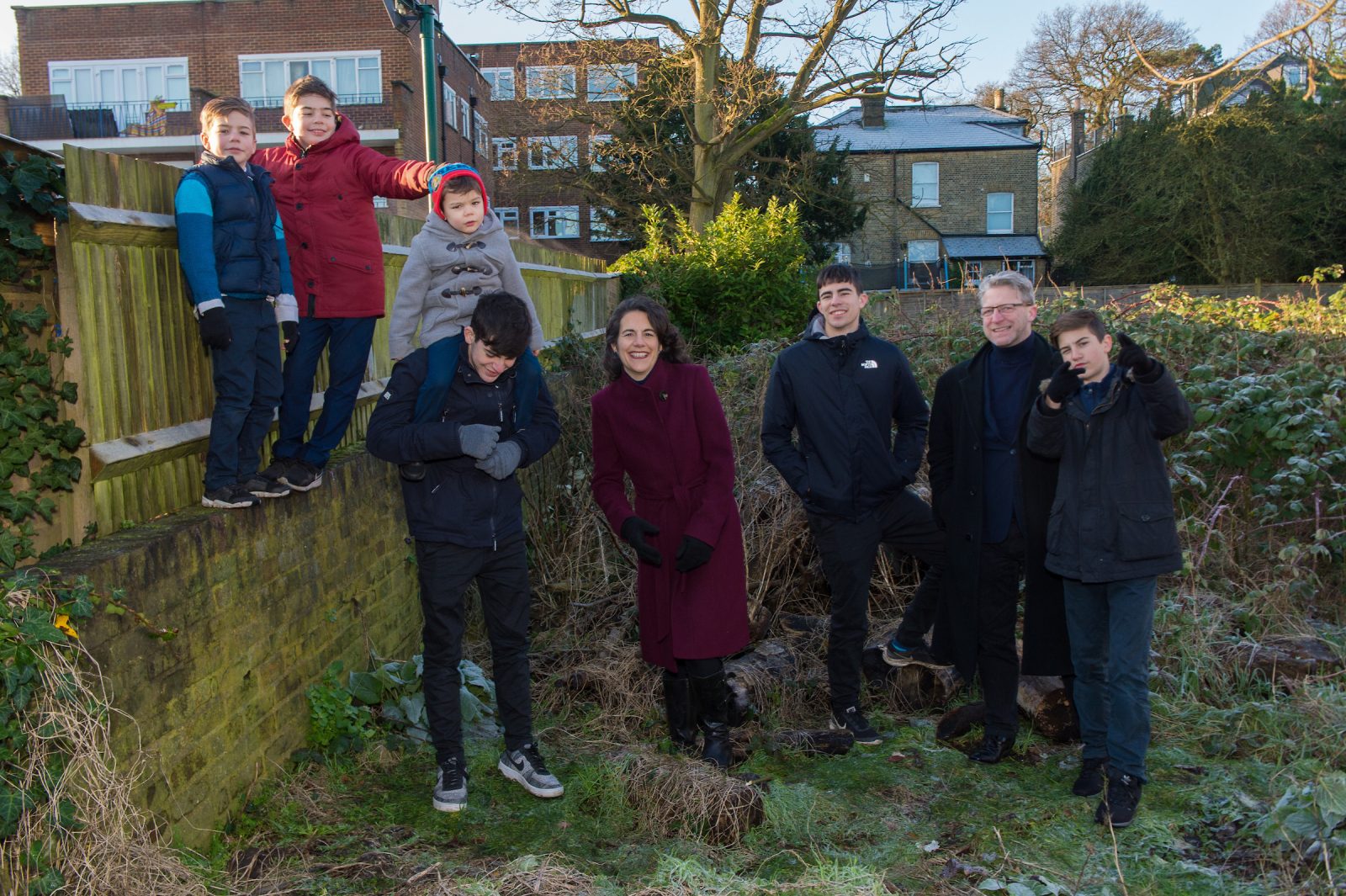We’re following the story of Anne, mother of six boys who is building a home for her family and one for the grandparents on the same site. They used the Right to Build to help them escape the private rental sector, acting as pioneers for the legislation, which even the council was unsure about at the time.

Part 6: Negotiating a deal
A quick recap:
We were invited to make an offer on the Vicarage Plot, and it turned out the Church had already acquired the access road. In parallel, the idea of building a community was bringing us in contact with organisations with expertise in that field.
Building a home or a community?
The Diocese determined to sell the vicarage plot (with access road) in November and the development manager invited us to make an offer.
We still retained our ideas of community building and hoped that during the negotiation period we might persuade the church to hold on to their land (see Blog 3) and consider a wider community project with the Council.
Meanwhile we began to draw up draft Heads of Terms (HoTs) for the offer to the Church. We had to look up on the internet for examples of HoTs – basically a simple plain English description of the offer.
The initial noises from the church were positive. We had some indication of what the auctioneer valuation would be and we knew we needed to offer a little over but we also had to make our own minds up about the value.
To do this, Peter, my architect husband, worked backward from the third/third/third rule for development that sets out a third for the land, a third for build costs and a third for developer profit (which we wouldn’t need as we were building for ourselves).
Imagine a 3 bed house in North London worth £750k, and you wanted to build one as a developer, 750k would be your GDV ‘gross development value’ and you might expect the build cost to be 250k. Then various development costs (including profit margin) might add another 250k leaving a so-called ‘residual valuation’ of the land at 250k. In reality land values in London had gone up so we estimated 40% rather than the 33%.
Peter worked out we could fit two 4-5 bed houses on the plot, with the loft spaces configured as rooms. We were confident in this given Peter’s architectural experience and his success with previous clients overturning officer recommendations at Committee. Splitting the land and building two houses we believed was affordable.
Tom McSherry of BuildStore confirmed that we could get two self build mortgages for two families on different plots if planning permission was obtained.
Estimating the costs
Peter had a rough estimation of build costs, too. As a guide to the developer costs he included costs around land acquisition – stamp duty and other taxes, lender fees and interest over the development period and fees for accountant, lawyer and land registry. Any costs for the road to extend utilities probably belong here.
Then there were professional fees, for planning, architects fees, structural engineer, probably an energy consultant engineer if you have to meet London Plan Carbon Reduction targets. To organise the whole thing you may have a project manager and a quantity surveyor to draw up a cost plan and track spend against it.
A professional developer may pay a 1-2% finder’s fee for a lead on the plot and may feel entitled to a wage for his efforts and some profit on your capital, risk and enterprise. Some of these costs we would not need to pay nor did we need to make a profit.
Partnering up
We did however need a partner. I had a friend in a similar position to ourselves whose daughter was in the same class as my son’s. I had bumped into her on several occasions outside the school gates and we had discussed our housing dilemmas. She longed for a home of their own and they had made the difficult decision for her husband to work in Dubai to earn the money needed for a deposit. He had been away 3 years. She was an accountant and he a quantity surveyor. Both essential skills for a development project!
It seemed like a good, perhaps even ‘perfect’, fit and I knew we had little time so I asked whether they would like to partner with us. She was excited by the idea. It almost seemed too good to be true that she could have a house and be able to design it too! Her husband was more cautious but decided it seemed like a good idea. They had a deposit and the maths worked. We corresponded by email showing them our draft heads of terms.
They were not so keen on our community building ideas. They wanted the security of owning the land but they were willing to keep an open mind. However the Church were not keen either. They wanted to proceed to a quick sale. As the deadline drew close for submitting our terms to the Church my friend’s husband flew in from Dubai to meet us and decide whether to take the chance. We agreed that it was an opportunity not to be missed and decided to go for it.
Best laid plans…
We sent the Heads of Terms to the Church 30th October and now had to hope and wait. We didn’t have to wait long but it wasn’t the news we were expecting to hear. I had an email from the Development Manager on 7th November:
“At the very last minute, I have been contacted by the local authority, who are asking if we would consider a joint planning application with them.
I am awaiting their proposal, however whatever it is I will have to take this to our directors as well as your proposal and it is bound to create delays in selling the site, which I wouldn’t expect to take place for a number of months now.”
It was a bitter blow. I knew immediately what that meant. It had only been a matter of time and we were too late. The Council had found out that the Church owned access to their site and contacted them to look at a joint commercial project. How ironic. If I had not contacted the Council and hassled them over the summer they never would have bothered!
Did this mean dead end for us?
Find your self and custom build register on the Right to Build Portal.
Read the other parts of the Self Build Family Build Blog.
Part One: Deciding to Self Build, the Turning Point
Part Two: Looking for Land in London
Part Three: The Land Value Idea
Part Four: A Small Matter of Access
Part Five: The Mystery of the Road Unravelled
Part Seven: Best Consideration Pursuing our Community Building Idea
Part Eight: Calling on Higher Parts
Photo: printed with permission of Fiona Hanson 2020©
*The Right to Build Expos were professional focussed training events sharing best practice, delivered by the Right to Build Task Force




